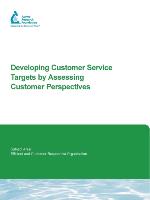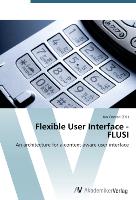Developing Customer Service Targets by Assessing Customer Perspectives
BücherAngebote / Angebote:
The objective of the research was to develop customer-driven customer service performance targets and measures for drinking water utilities by assessing customer perspectives and soliciting customer input. Customer satisfaction research often produces findings that are superficial or unhelpful. Satisfaction surveys that estimate only current satisfaction, and that define the areas of satisfaction broadly rather than narrowly and in terms of specific experiences, do not produce information that utility managers can directly act upon. What is needed is information about the rate of satisfaction change as service rises and falls, and the cost of increasing and decreasing service.
Qualitative and quantitative research was conducted with customers of four participating utilities to better understand how customers' perceive service, the attributes of service that are important to them, and the service levels they expect from their utility. Data were collected on current satisfaction with more than 20 attributes of service, as well as on the satisfaction customers would expect to receive if alternative levels of service were provided. The utility also undertook a cost exercise to help identify the costs of delivering the attributes of service at levels that are higher and lower than the current level. A linear programming approach was used to identify optimal service levels for each attribute of service.
Focus group research indicates that customers view customer service in a positive way when it makes the needs of the customer paramount. Courtesy, friendliness, and "being listened to" are part of this attention. Customers hold management responsible for the treatment they get from employees and perceive that good service reflects strong management. Although the taste of water is a source of complaint, this does not always translate into criticism of the utility. Many people accept their water's taste, do not see it as the utility's fault, and do not equate it with being unsafe to drink.
Quantitative survey research indicates that overall satisfaction with partner water utilities is relatively high, averaging 80 out of 100 points over all samples. Profiles of customer satisfaction with different levels of service are remarkably consistent across participating utilities and a national sample, suggesting a common performance standard nationwide.
Optimization modeling indicates that partner utilities could improve customer satisfaction by 1% to 17% at current costs by shifting their investments in customer service. Each partner utility has a unique configuration of recommended changes. In general, the model shows that customer communication costs and representative training costs leading to more effective interpersonal relations have the most impact per dollar invested.
Folgt in ca. 15 Arbeitstagen


